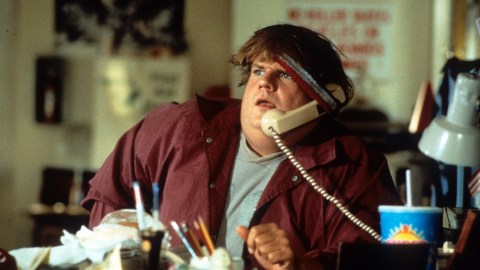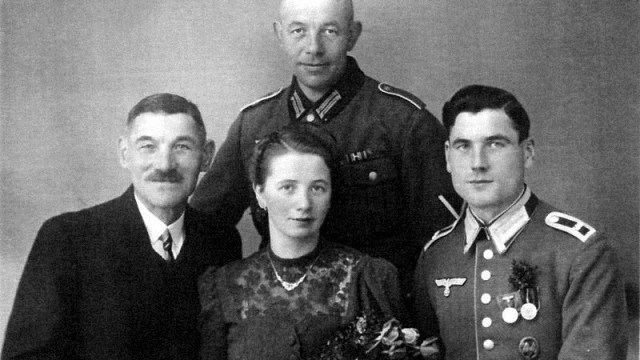Multitasking is killing your productivity

You begin the project your boss wants by end of the day and put on The Office for background noise. You get a good flow going just before receiving an email, and you start to write a response, but then a coworker hails you from across the open office right when an instant message pops onto your screen with a hilarious meme, and you try to help one coworker while letting the other know you appreciate the LOLs, but then you realize you can’t remember which of your 15 browser tabs were for the project and which were for the email, and now the phone is ringing.
Welcome to the modern American workday, a multitasking gauntlet from start to finish.
While managers view multitasking as a means to increase productivity, neuroscientists couldn’t disagree more. Decades of research has shown that thehuman brain wasn’t designed to multitask, and pushing workers to do so not only leads to stressful work environments but also kills productivity — not to mention profits.
Are you a multitasking junkie looking to sober up and de-stress? Here’s what you need to know.

Multitasking is for the birds (and computers)
The word “multitask” entered our lexicon with the advent of computers, and by the late ‘90s, it was adopted as business jargon to describe modern work habits. While the verb is perfectly apt for computers, where even early CPUs could execute multiple processes concurrently, it is less apt for people and our remarkable, if finicky, brains.
As Dan Harris told Big Think, “Multitasking is a computer-derived term. Computers have many processors. We have only one processor. We literally neurologically cannot do more than one thing at a time.”
Instead of multitasking, the human brain performs a function called “task switching.” Summarizing the research, theAmerican Psychological Association explains task switching as follows:
The human “executive control” processes have two distinct, complementary stages. They call one stage “goal shifting” (“I want to do this now instead of that”) and the other stage “rule activation” (“I’m turning off the rules for that and turning on the rules for this”). Both of these stages help people to, without awareness, switch between tasks. That’s helpful. Problems arise only when switching costs conflict with environmental demands for productivity and safety.
For example, you can easily hold a conversation, drink a cup of coffee, and walk at the same time. That’s because two of those acts, walking and drinking, require little focus, allowing your brain to dedicate its processing power to the conversation. (Even then, consider the times you’ve spilled coffee on yourself because the mouth hole shifted slightly to the left.)
On the other hand, when two activities require focus, your brain must disengage the neurons for one task (goal switching) and then fire up the neurons for the other task (rule activation), and it must do this every time your attention changes. This is why the modern office environment previously illustrated is so inefficient.
Multitasking has been shownto diminish our ability to learn,stress us out, waste our productive time, and add 50 percent more errors to our work. One study estimated the global loss from multitasking could be as much as $450 billion a year.
When you consider losses beyond the office, such as texting and driving, the results are even more devastating.
While humans obviously lose to computers, we aren’t even the best multitaskers — sorry, task switchers — in the animal kingdom. Dr. Sara Letzner and Dr. Onur Güntürkün from Ruhr-Universitaet-Bochum testedthe task switching abilities of people and pigeons. Although the sample size was small, the pigeons outperformed the humans and switched tasks 250 milliseconds faster.

Recovering your productivity and health
The alternative to multitasking is, obviously, to focus on one task at a time. Productivity guru Cal Newport calls this approach “deep work,” but it also goes by flow and monotasking. Whatever the label, the goal is the same: Develop techniques to keep your focus on important tasks and exclude the myriad of lesser stimuli vying for your attention. Such techniques include:
Schedule your day. Schedule your day to dedicate the hours you are most productive to important work. For most people, this will be in the morning after breakfast but before the afternoon slump. Then schedule time for less important work during your less productive hours. Those emails aren’t going anywhere.
List priorities. Write out the day’s priorities before you start work or the night before. List them in order from most important to least, and check them off as you go. By committing yourself right away to your most important task, you’ll help maintain your focus and keep to the schedule you set out above.
Time management. There are many ways to manage your time to foster focus. One popular method is the Pomodoro technique. With it, you schedule your work around 30-minute chunks of time, 25 minutes dedicated to a single task and a five-minute break. You can learn more about ithere.
Shut out distractions. It’s not just enough to ignore distraction; you’ve got to shut them out. If your distractions come from fellow co-workers, a nice, big pair of headphones will provide the visual equivalent of a “Do Not Disturb” sign. If they don’t take the hint, then…maybe an actual “Do Not Disturb” sign? A bit blunt, true, but it’ll get the job done.
Tune out. If you need background noise, don’t play anything that draws your attention away from your work. You may think you’ve seen The Office enough to ignore it, but the truth is that you will always be keeping an ear open for your favorite bits (Parkour!). Go with music instead. Again, nothing that pulls at your attention with a swelling urge to sin karaoke. Instrumental music will serve you best. Alternatively, you could see if a background noise generator works for you.
Blacklist the Internet. Only visit the parts of the Internet that are required to complete your work. Stay away from social media, news sites, and all wikiholes. If need a helping hand, there are several programs that can blacklist the less productive parts of the Internet.
Take breaks. Like any part of your body, your brain gets tired the more you work it. Taking breaks will revitalize your mind so you can keep going strong. To get the most from your breaks, be sure to disconnect from work entirely. Grab a snack, socialize with a coworker, read a book, or enjoy the wisdom of Nick Offerman.
Develop mindfulness. Mindfulness, productivity, and monotasking go hand-in-hand. As you practice mindfulness, you’ll be able to better keep your attention from straying toward other projects, after-work activities, and fears about performance, improving your productivity and follow-through.
Stay healthy. You don’t need yet another article telling you to eat healthy and exercise, so let’s make this short. A healthy mind and body are key to giving you the energy and positive emotions to push yourself to finish the workday strong.
___________
All of this is, of course, easier said than done. Focus isn’t easy. Distraction is what our minds do, and it isn’t helped by our always-on, instant-results culture. To implement these changes, you may need to have a difficult talk with your manager about the benefits of monotasking. But the benefits to your productivity and work-life balance will be well worth the effort.





